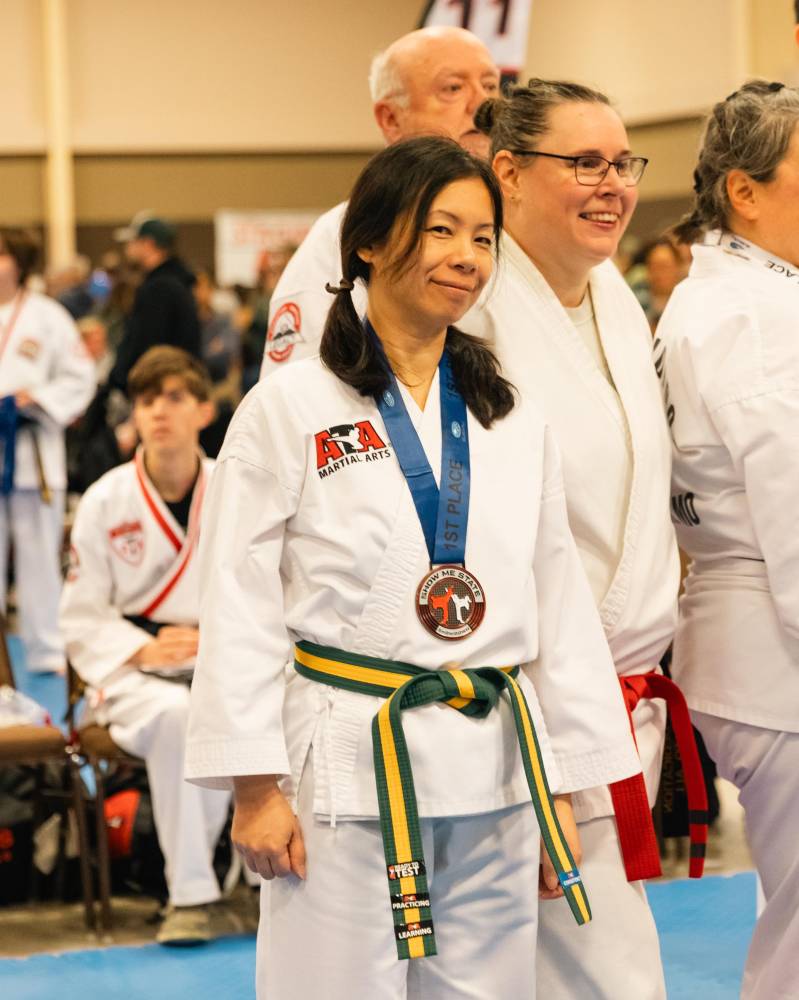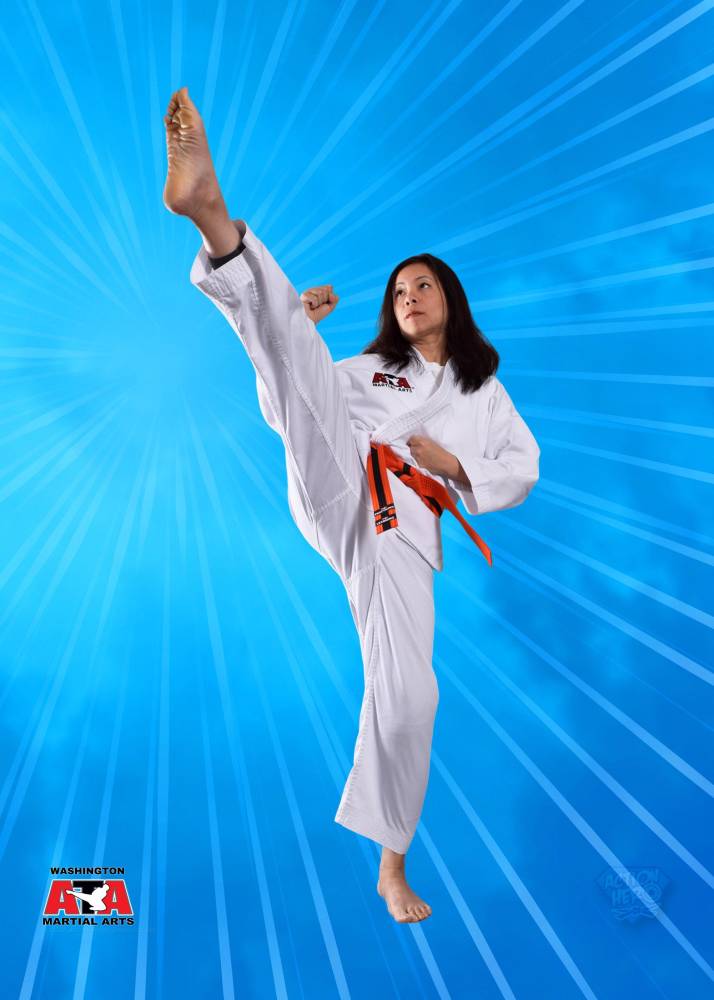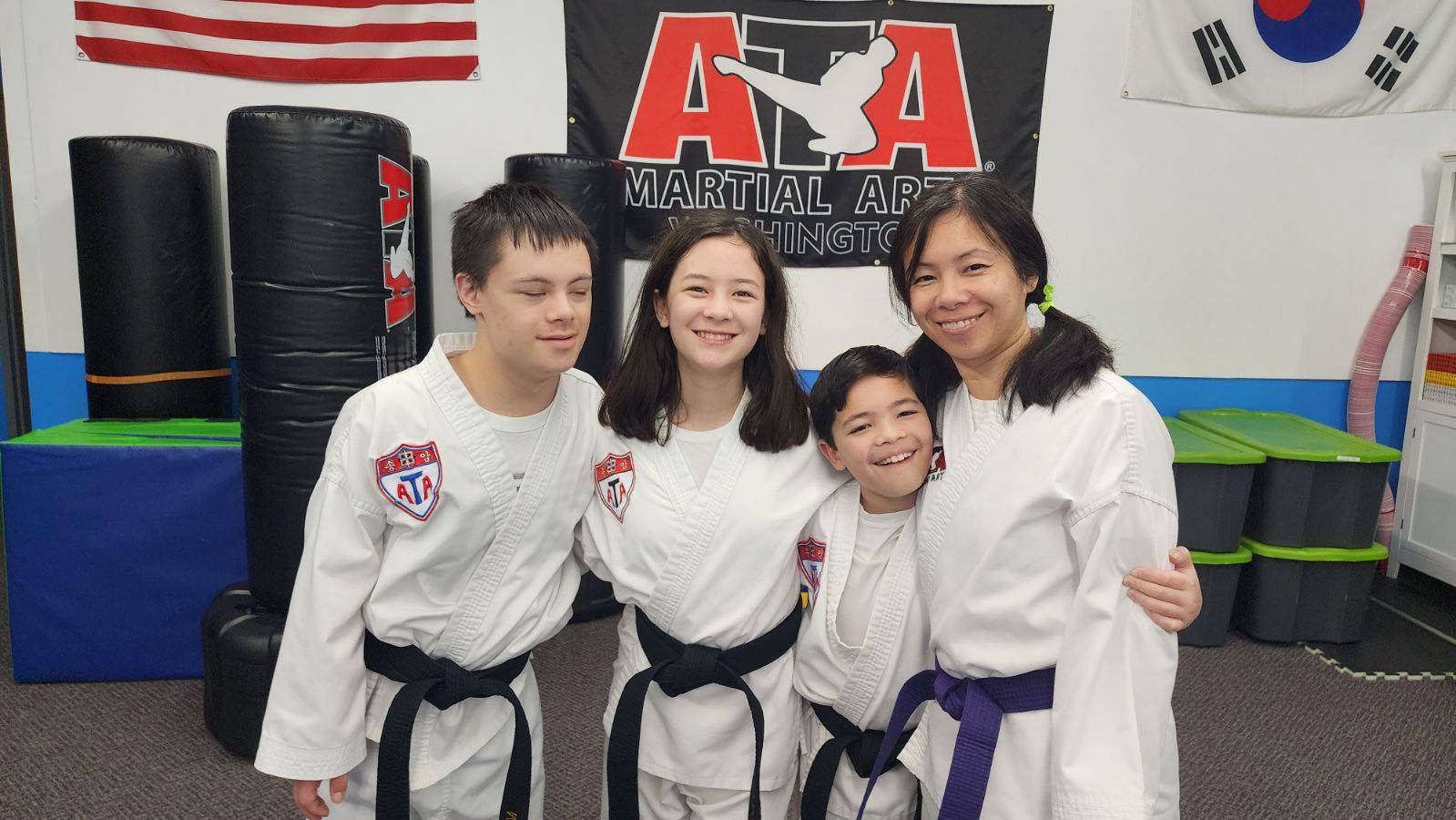Taekwondo mom’s journey from craniotomy to champion

Ria Miñano Haag had two craniotomies in 2012. Eleven years later, she took up taekwondo. At 46, she won first place at a women’s colored belt division traditional forms (poomsae) tournament.
Poomsae is a structured and choreographed series of techniques executed in a specific count. Drilling the correct movements is considered a crucial component of training, and mental as well as physical resilience. Forms are like a noncombative dance, and function as a conditioning exercise.
“I might have died [from my operations], so I don’t compete in traditional sparring events. I don’t want to risk getting a kick to the head despite being in full sparring gear, which includes a padded head protector. I’m cautious about anything that can impact my head,” said the mom who homeschools her three kids: Matthew, 16, Liz, 13 and Alex, 11.
Haag wasn’t always athletic. In her younger years, she played tennis recreationally and enjoyed being part of a dance troupe at university, but never participated in any serious competitions.
“I began training in taekwondo in January 2023. It’s a piece of the puzzle in my health journey,” shared Haag.

Why taekwondo? “First, it’s an activity to do with my kids. When I started, my three kids were already first-degree black belts. They [started] taekwondo around four years [before I did]. I get to witness and understand their skill development and growth firsthand. Second, it’s a good exercise and a natural stress reliever. Third, everyone at my dojo is so encouraging! It helped that another mom friend and I started together. Working towards my goals is more fun when we have a support group,” she said.
Aside from taekwondo, Haag does stretching exercises and practice drills at home for a few minutes every other day. She puts in more training time when preparing for a tournament.

Challenges
Recuperating from her life-threatening operations, which had her relearning how to speak and write, only seemed to make her more determined and strive harder. Haag shared some challenges she faces in her wellness journey and how she copes with them.
“There are times when my kids and I are exhausted from everything else that happened during the day and know it would be easier for us to stay home and not go to the dojo to train,” she admitted. “Then I remind ourselves how much better we usually feel after training.”
Competing in tournaments is also new for her, adding that it takes a lot of time and discipline for her to prepare for them. “It’s an amazing experience competing with other women in their forties from all over. They are moms like me. They’re highly competitive yet very encouraging. We all cheer for each other, even if we compete for points to add to our overall individual scores. We’re all there to do our personal best and enjoy the journey,” Haag said.

For those thinking of following the same path and taking up martial arts midlife, she advised, “Write down your goals. Try it for at least three months to truly assess whether it’s a good fit for you. If possible, join with family or a friend. You can keep each other accountable and motivated.”
In taking up a combat sport at this point in her life, Haag said there isn’t anything she’d do differently. “I plan to continue training in taekwondo for as long as I am able. It’s part of my health journey. I enjoy it, and I value my health and family.” —contributed INQ Ria Miñano

















